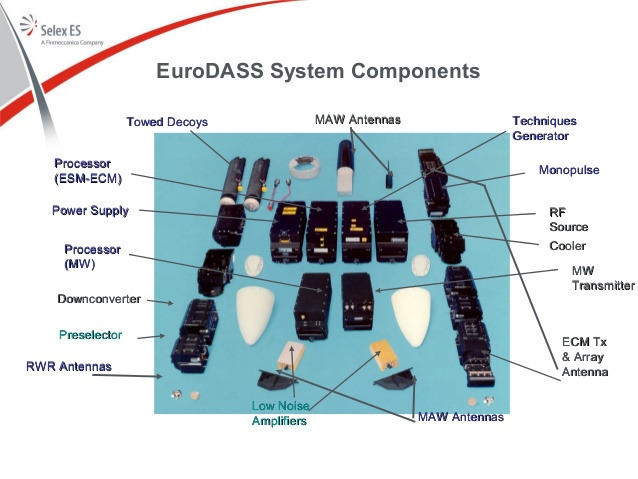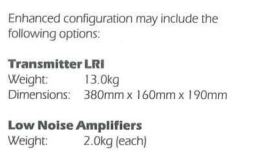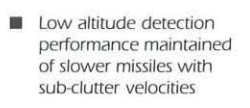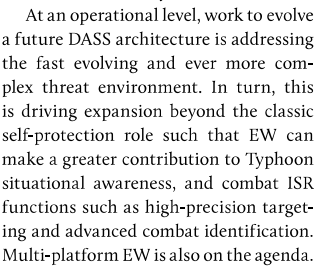They just make it up as they go along
Cant use the products own brochure as a trustworthy source. But a video of Rafale at an airshow is suffice?🧐
They just make it up as they go along
Cant use the products own brochure as a trustworthy source. But a video of Rafale at an airshow is suffice?🧐
Your attached source is just some JED magazine? That isn’t a eurodass publication. BRM1# is correct here.
I just realised that I downloaded and reuploaded the file which would have removed that link.
It’s from eurodass.com
Hosted by, not written by. That’s a big distinction.
Fair enough.
How much evidence do I need to have directly from EuroDASS before reporting?

Surely two MAW sensors in the wing roots would suggest extended range to the front due to the way the Radar waves would superpose? At the very least it should decrease the effectiveness of noise.
This of course is assuming both radars transmit on the same frequency.
You need a signed form from the head of design, along with one of his hairs for proof of identity
What exactly is the ingame issue you’re trying to correct?
Leonardo and EuroDASS both say the system has “reliable performance against current and predicted high velocity missiles”, which would also suggest this, because 9km against a mach 4 missile front aspect is not reliable. Unfortunately that claim alone means very little because it’s based almost entirely on reasoning through speculation. All images of AMIDS/DASS as components shown by them also show an additional component behind the front missile approach warners, but not the rear, which would support the next claim that:
The publication I submitted states that the front two MAW sensors are fitted with amplifiers to increase sensitivity to handle increased closure rates (basically to detect missiles at a longer range from the front, which would make sense.), which is what it says here:

Unfortunately that alone evidently is not enough of a source, so i’m asking what would be necessary on top of that to qualify as sufficient evidence. Would being in direct combination with the EuroDASS/Leonardo claims be enough or would I need to find them directly stating those components are amplifiers?
^

Did find this posted last year in part 1 of the forum that labels them as amplifiers.
tldr MAW should probably detect things further out in front aspect
The system has to increase sensitivity because of closure rate. If your velocity gate is set for a certain speed, a missile coming head-on will be closing far faster than one in a rear-aspect shot. Using the same gate in both cases could mean the MAW doesn’t detect the missile at all.
“Increased sensitivity” here doesn’t necessarily mean greater detection range, it’s about ensuring the missile is picked up despite the high closure speed.
Which is why I didn’t think to report this before, but the addition of amplifiers being present suggests it does mean greater detection range (as an amplifier isn’t going to change your velocity gate)
Amplifiers here are not about extending range. They are about making sure the system keeps a reliable lock on signals that are already within range.
At high closure rates the Doppler shift pushes the return closer to the edge of the receiver’s passband. Without enough gain the signal can get lost in noise and the MAW will not trigger. With amplification you keep the SNR high enough that the missile is still detected.
So it is not “this gives you more range,” it is “this stops you from missing what is already there.”
Makes some sense.

Partially related, is there any known reason as to why the transmitter LRI is an optional part of the configuration (and apparently not included in the base config)?
Unsure I know that EVo DASS includes LRIs as standard.
One question here, obviously there would be a difference in the return strength but running off of 32-38GHz wouldn’t the amplitude effect of doppler shift be marginal at most? I mean the shift at mach 5 closure rate is like 0.5MHz which would be well within the margins of a receiver at that high a frequency. I feel like adding LNAs for a difference that marginal seems pointless.
It’s rumoured to be 94Ghz like Brimstone. Which gives it better target discrimination in clutter, which for a PD MAW you want for sure.
Somewhat reinforces my point, at that high a frequency the doppler shift basically stops mattering as the bandwidth of the receiver tends to be inversely proportional to the pulse length (which is limited by the wavelength). At those kinds of frequencies any reasonable shift from a missile even at an exceptionally high closure rate would be very unlikely to approach the limits of the frequency band surely?
also at 94GHz I imagine it could pick apart target features? I know brimstone can at least.

This does also suggest that it may have a very high frequency.

either way it’s probably not brilliant at detecting and tracking aircraft. I suspect it’s the second one since DASS is known to be able to provide data to sensor systems. It’s probably just limited.
tldr if dass/amids can detect jets/ground vehicles it probably isnt great at it since praetorian evo has plans to improve on that
Is that being questioned again?